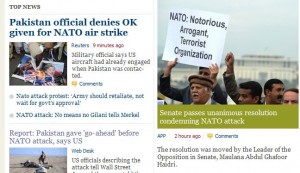Zardari Returns to Pakistan; Liaison Officers Return to Border Centers; Stage Set for Haqqani as Double Scapegoat
Two major steps toward stability in Pakistan and restoration of relations with the United States have taken place, as President Asif Ali Zardari returned to Pakistan yesterday while liaison officers have now returned to the border coordination posts from which they were withdrawn as part of the response to the November 26 NATO attack that killed 24 Pakistani troops. NATO supply routes remain blocked, however. In a very interesting move, former Pakistani Ambassador to the United States Husain Haqqani has been forced to submit a statement and to appear before the Abbotabad Commission. The Commission is seeking information on visas issued by the Washington embassy during his tenure as Ambassador.
Despite the earlier statements that Zardari would take two weeks of rest before resuming his duties, Zardari yesterday returned to Pakistan from Dubai:
Pakistani President Asif Ali Zardari returned home from medical treatment in Dubai to face rising tension between his civilian government and the military over a memo accusing the country’s generals of plotting a coup.
It’s not clear when the deeply unpopular leader who has uneasy ties with the army will return to work. He flew into the southern city of Karachi after treatment for a heart condition.
It would appear that Zardari immediately took up at least ceremonial duties:
State television showed him at his residence, looking relaxed as he met senior provincial officials.
Multiple media reports had addressed the fact that Zardari and Army Chief Ashfaq Kayani had talked on the phone prior to Zardari’s return. An article today by Dawn provides more details on that conversation: Read more →

